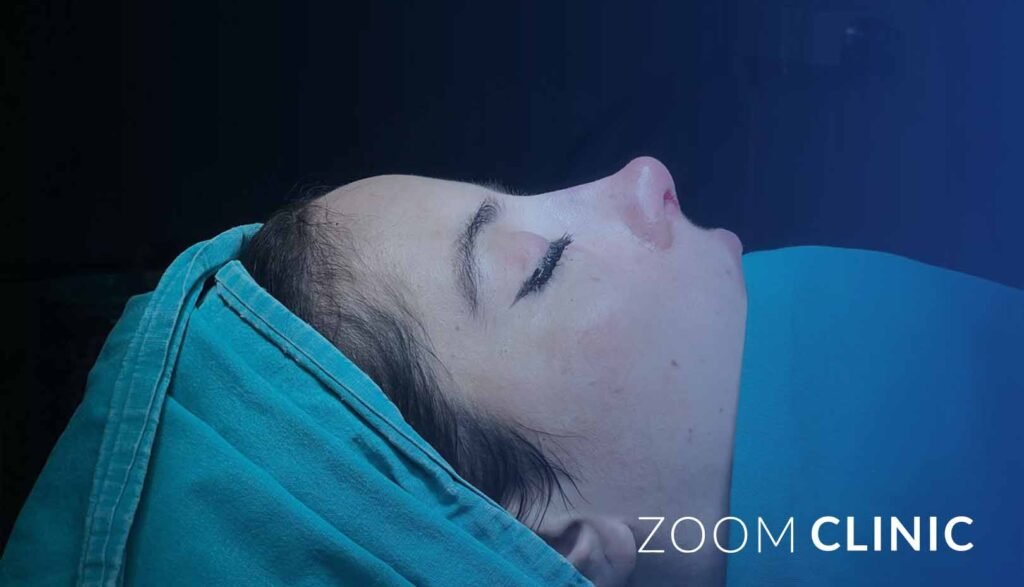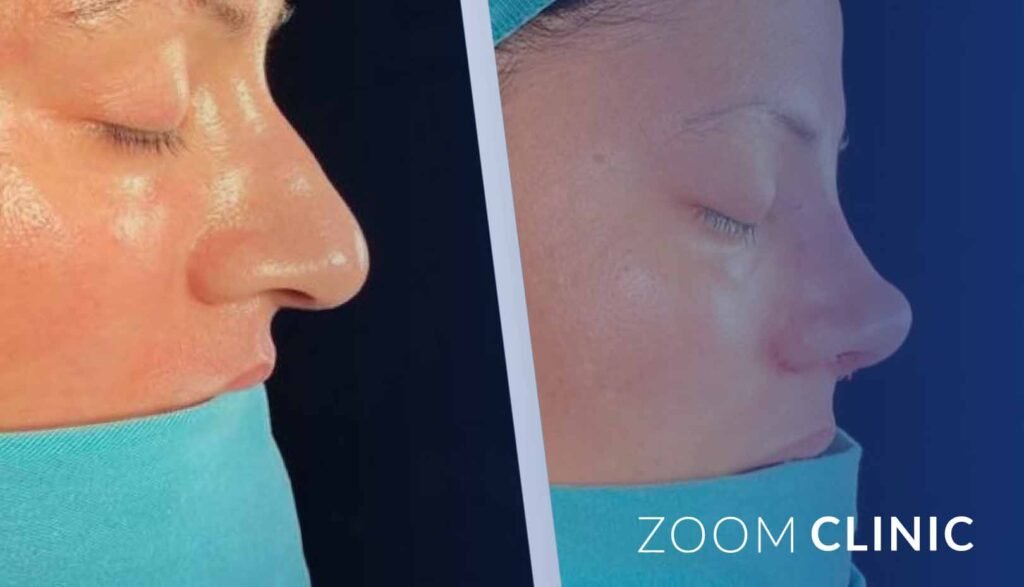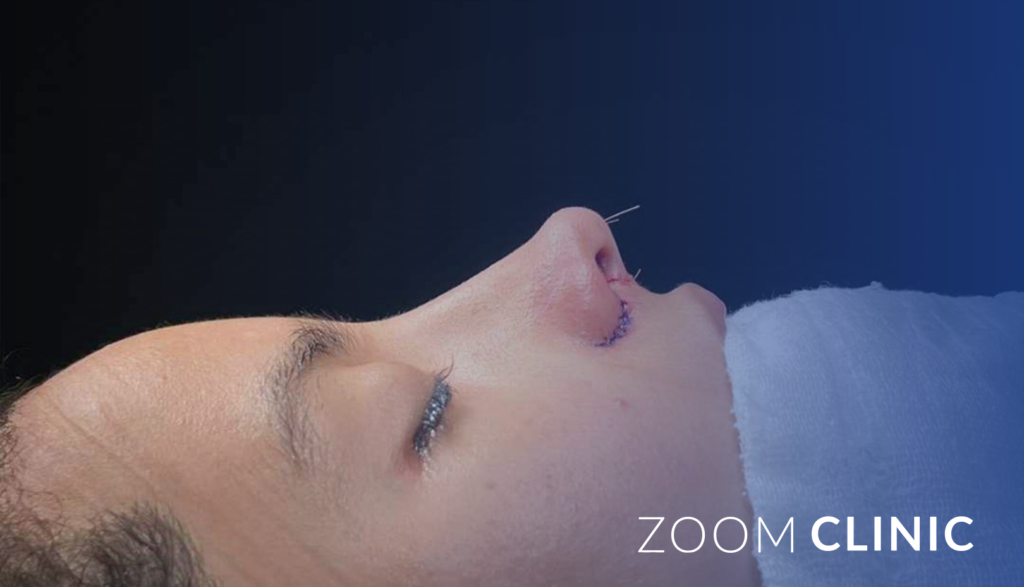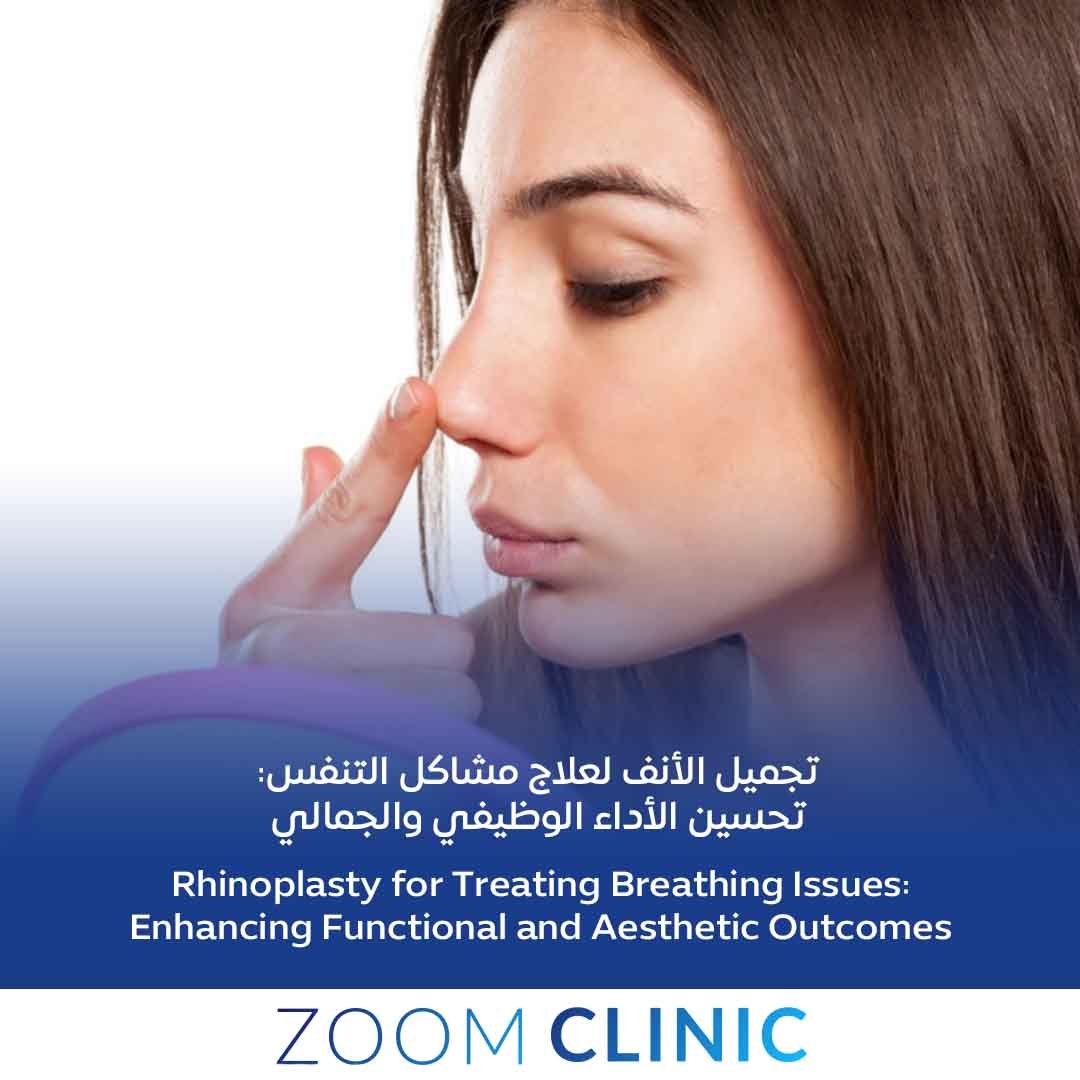Rhinoplasty, often associated with cosmetic enhancement, is a critical cosmetic procedure in addressing functional issues.
For individuals experiencing breathing problems due to structural abnormalities, Rhinoplasty for Breathing Problems, also known as functional rhinoplasty, can improve both nasal function and appearance.
This article explores how rhinoplasty can treat conditions like a deviated septum, enhance airflow, and deliver a healthier life.
Table of Content
Understanding Nasal Breathing Problems
Nasal breathing problems can significantly impact an individual’s quality of life, causing discomfort, fatigue, and even affecting sleep patterns.
These issues often stem from structural abnormalities within the nasal passages, such as a deviated septum, nasal polyps, or enlarged nasal turbinates.
A deviated septum, in particular, is a common cause of breathing impairment. It can obstruct one or both nasal passages, making breathing through the nose difficult.

Nasal polyps, on the other hand, are growths that can develop within the nasal passages. They can further block airflow and exacerbate breathing difficulties.
Understanding the root cause of nasal breathing problems is crucial in determining the most effective treatment approach, which may involve nasal surgery or other interventions.
Understanding Functional Rhinoplasty
Functional rhinoplasty focuses on improving nasal functionality, often addressing structural abnormalities or medical conditions such as:
- Deviated Septum: A misaligned nasal septum, the thin piece of cartilage dividing the nasal cavity, can cause breathing difficulties.
- Enlarged Turbinates: Swollen nasal tissues that obstruct airflow.
- Nasal Polyps: Growths that block nasal passages.
- Nasal Obstruction: Caused by trauma or congenital issues, leading to impaired breathing.
Unlike cosmetic procedures, functional rhinoplasty prioritizes nasal airway correction to resolve health problems like breathing impairment and sleep apnea.
This nose surgery can significantly improve the nose’s functional and aesthetic aspects.
The Link Between Nose Structure and Breathing
The nose’s structure is critical to breathing. The nasal passages serve as the primary pathway for airflow. The nasal septum, a thin wall of cartilage and bone, separates the nostrils and supports the nose’s shape.
However, when the septum is deviated or crooked, it can cause breathing problems by obstructing one or both nasal passages. The nasal valves, the narrowest part of the nasal passages, can also contribute to breathing difficulties if they are collapsed or obstructed.
Functional rhinoplasty, a type of nasal surgery, can help address these structural issues, improving breathing by restoring proper airflow through the nasal passages.
How Rhinoplasty Improves Breathing Problems

A rhinoplasty procedure for breathing problems involves reshaping nasal structures to improve breathing and airflow. Key surgical techniques include:
- Deviated Septum Surgery: Correcting the nasal septum’s alignment to clear obstructions.
- Turbinate Reduction: Reducing the size of turbinates to improve nasal function.
- Reconstructive Surgery: Restoring nasal structures affected by trauma or previous surgeries.
These techniques ensure significant improvement in nasal passages, allowing patients to breathe easier and experience relief from chronic breathing issues.
Balancing Functionality and Aesthetics
Functional rhinoplasty, often called a nose job, combines medical and cosmetic benefits. While the primary goal is to solve breathing problems, patients also gain an enhanced nose appearance.
This dual approach improves facial harmony, confidence, and overall health.
Steps to a Successful Functional Rhinoplasty
- Initial Consultation: The process begins with a physical exam and a detailed discussion with a plastic surgery expert. The surgeon evaluates nasal structures, discusses the causes of breathing troubles, and outlines a treatment plan.
- Customizing the Procedure: Each rhinoplasty is tailored to the patient’s needs, whether correcting a deviated septum or addressing nasal obstruction.
- Surgical Procedure: Under local anesthesia or sedation, the surgery involves precise adjustments to nasal tissues, septum, or other areas to improve breathing and balance the nose’s appearance.
- Recovery Process: Postoperative care is essential for optimal results. Patients typically recover in a comfortable recovery room before resuming normal activities.
Choosing the Right Surgeon
Selecting an experienced surgeon for your cosmetic procedure is crucial for successful outcomes. Look for a certified or board-certified facial plastic surgeon with extensive expertise in functional rhinoplasty.
Their understanding of nasal anatomy ensures a balance between aesthetic purposes and functional reasons.
Common Conditions Treated by Functional Rhinoplasty, Including Deviated Septum

- Sleep Apnea: Alleviating breathing complications during sleep.
- Nasal Obstruction: Opening blocked nasal passages for better airflow.
- Crooked Nose: Straightening the nose to improve both appearance and functionality. Conditions such as a deviated septum can block the nasal passage, obstruct airflow, and may require surgical interventions like septorhinoplasty and septoplasty.
Risks and Complications
As with any surgical procedure, nasal surgery carries risks and complications. Although rare, bleeding and infection are potential risks. Septal perforation, or a hole in the nasal septum, is another possible complication, occurring in single-digit percentages.
Choosing a certified or board-certified facial plastic surgeon is essential to minimize these risks and ensure optimal results. Additionally, it is crucial to carefully follow post-operative instructions to promote healing and reduce the risk of complications.
While risks and complications can occur, the benefits of nasal surgery, including improved breathing and enhanced quality of life, often outweigh these potential drawbacks.
Benefits of Functional Rhinoplasty
- Better Nasal Function: Significant improvement in breathing, especially for those experiencing a breathing problem.
- Improved Quality of Life: Relief from breathing troubles and chronic health issues.
- Enhanced Appearance: Subtle adjustments for facial harmony.
Conclusion
Functional rhinoplasty is the best solution for individuals struggling with breathing problems caused by structural nasal issues. This surgical procedure combines medical and cosmetic expertise and delivers better breathing, improved health, and enhanced confidence.
Whether addressing a deviated septum, nasal obstruction, or other causes of breathing problems, rhinoplasty ensures a healthier life with long-lasting benefits.
For individuals seeking the best solution to breathing impairment and aesthetic concerns, consulting with an experienced surgeon is the first step toward achieving functional and aesthetic harmony. A personalized treatment plan and expert care make rhinoplasty an invaluable option for improving your breathing and appearance.
Frequently Asked Questions
Is there a surgery to help you breathe better?
Yes, there are surgical procedures designed to help you breathe better by addressing structural issues within the nose. Functional rhinoplasty, septoplasty, and turbinate reduction are common surgeries that aim to improve nasal function and alleviate breathing difficulties.
Can rhinoplasty fix breathing problems?
Yes, rhinoplasty can address breathing problems by correcting structural abnormalities in the nose, such as a deviated septum or nasal obstructions. This type of surgery, known as functional rhinoplasty, focuses on improving nasal function and airflow.
Is there a surgery to help you breathe better?
Yes, there are surgical procedures designed to help you breathe better by addressing structural issues within the nose. Functional rhinoplasty, septoplasty, and turbinate reduction are common surgeries that aim to improve nasal function and alleviate breathing difficulties.
Can rhinoplasty fix breathing problems?
Yes, rhinoplasty can address breathing problems by correcting structural abnormalities in the nose, such as a deviated septum or nasal obstructions. This type of surgery, known as functional rhinoplasty, focuses on improving nasal function and airflow.
How much does a nose job cost for breathing?
The cost of a nose job for breathing issues varies depending on the complexity of the procedure, the surgeon’s expertise, and geographic location. It’s advisable to consult with a board-certified facial plastic surgeon to get an accurate estimate tailored to your specific needs.
Does a nose job improve breathing?
Yes, a nose job, particularly when performed for functional reasons, can significantly improve breathing. Functional rhinoplasty addresses structural issues such as a deviated septum, nasal obstructions, or enlarged turbinates’, which can impair breathing. By correcting these problems, the procedure enhances airflow through the nasal passages, leading to better breathing and overall nasal function.
Get the special offer today from Zoom Clinic
Read Also:


